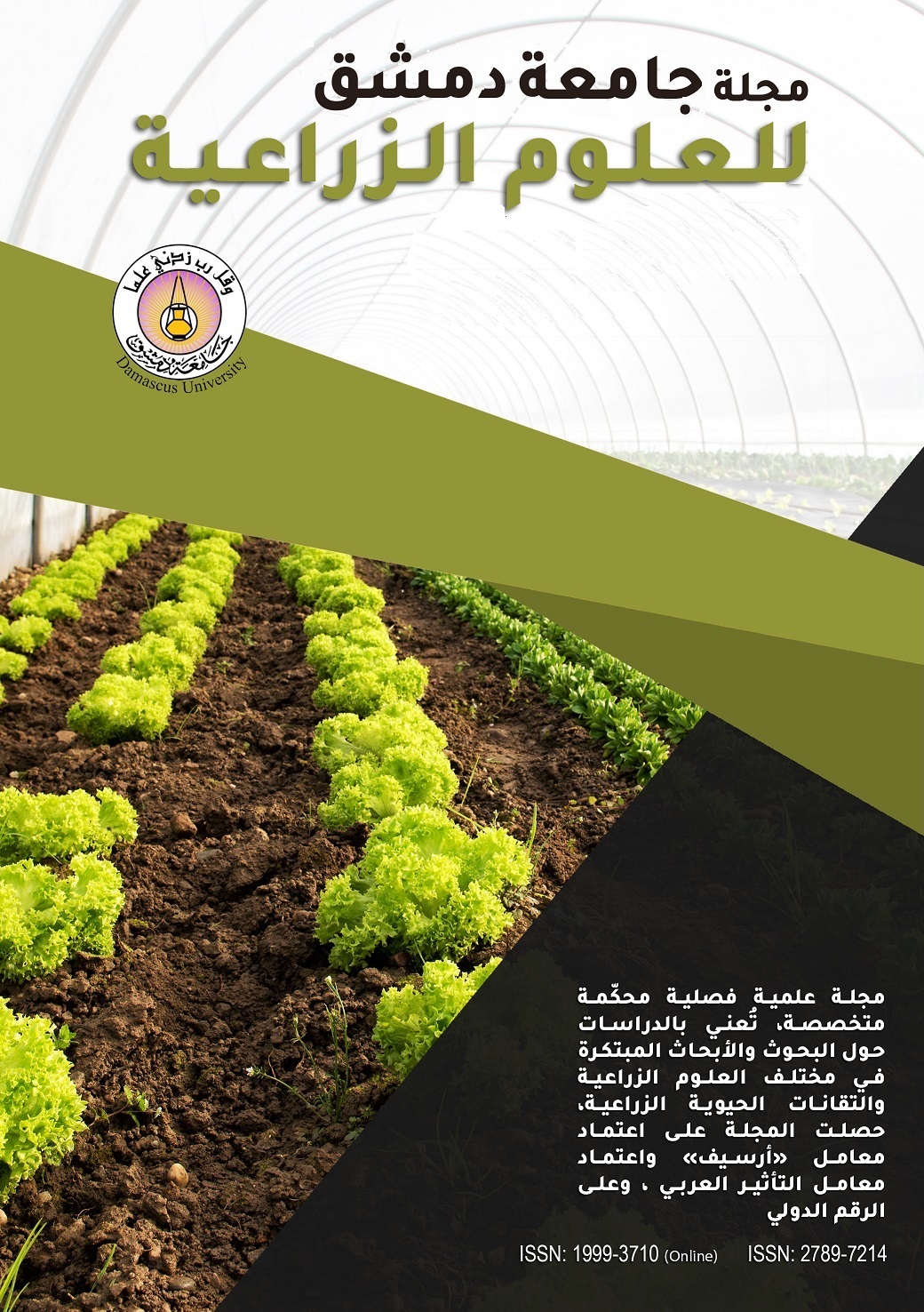Studying some properties of pectin extracted from orange and pomegranate peels by different extracrtion methods
Keywords:
extraction, pectin, Citric acid, Ammonium oxides, Metoxyl content, Ash, Orange peel and pomegranate, AshAbstract
The study was carried out in the laboratories of the Department of Food Sciences at the Faculty of Agricultural Engineering, University of Damascus and the laboratories of agricultural scientific research in Damascus during the season 2019. The study included extracting pectin from orange and pomegranate peels, using several methods (ammonium oxalate - oxalic acid - citric acid), and studying its effect on some of its chemical properties (Ash percentage, pectin equivalent weight, metoxyl pectin content). The results showed an increase in the percentage of pectin in orange peels when extracted by the oxalic method compared to the rest of the extraction methods, which reached 40.1%, while the lowest percentage of pectin in pomegranate peels extracted by the method of citric acid was 10%. The results showed that there were no significant differences in the ash content of pectin extracted from orange and pomegranate peels by using all extraction methods. With regard to the equivalent weight of pectin, there was a significant superiority in the equivalent weight of pectin extracted from orange peels using the citric acid method, reaching 905.57 g compared to the rest of the extraction methods, while the lowest weight ratio of pectin equivalent weight for pomegranate peels using the citric acid method was 318.1 g. The results are illustrated. There were no significant differences between all the extraction methods in terms of the pectin content of metoxyl extracted from orange peels. As for the pomegranate peel, there was a significant superiority in the metoxyl content when using the ammonium oxalate method, which reached 4.8%.

